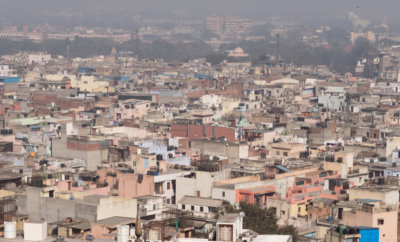Arts
Indian Supreme Court Raps Govt Over Discoloration of Taj Mahal

Taj Mahal
Photo: Flickr
The once ivory-white marble mausoleum on the banks of the Yamuna river in Agra is turning green, the court observed.
The Supreme Court of India has expressed concern over the condition of the Taj Mahal. The apex court on May 1 asked the central government to take urgent steps to analyze the damage, and restore the UNESCO World Heritage Site, in Agra, Uttar Pradesh.
The once ivory-white marble mausoleum on the banks of the Yamuna river has turned green, the court observed.
“First it was yellow and now it is becoming brown and green,” the bench, comprising Justices Madan B Lokur and Deepak Gupta, commented to Additional Solicitor General (ASG) ANS Nadkarni, who was representing the government, according to the Press Trust of India.
The petitioner, environmentalist MC Mehta, told the court that its directions to protect the monument were not heeded to by the authorities and that the condition of the 17th century monument has become “horrible.” He said that apart from the discoloration, there were patches on the marbles, and a minaret also fell down recently.
“We do not know whether you have or perhaps do not have the expertise. Even if you have the expertise, you are not utilizing it. Or perhaps you do not care. Perhaps we need some expert organization from outside India unless there is a decision that the Taj has to go,” the bench said, adding, “You can get experts from India as well as from outside.”
The discoloration is happening because of weathering and industrial pollution, but thorough studies are required before remedial measures are implemented, the Hindu quoted experts as saying.
The World Health Organization listed Agra among one of the most polluted cities in the world on May 2.
The court told the Center that the condition of the Taj Mahal indicates that “there is a lack of will.” Marking May 9 as the date for the next hearing , it said, “You think about getting the experts from within the country or outside the country.”
The central government is taking measures to limit visitors to the monument by hiking ticket prices.
An earlier study conducted by Indian and American researchers from the Indian Institute of Technology-Kanpur, Archaeological Survey of India, Georgia Tech and the University of Wisconsin in 2014 found that the main reasons behind the discoloration were particulate matter, carbon from burning biomass and refuse, fossil fuels, and dust. The discoloration was first noticed in the 1970s.




You must be logged in to post a comment Login